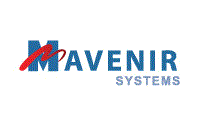RCS& RDS, a leading cable operator in Romania, is using ECI Telecom's "Apollo" Optimized Multi-Layer Transport (OMLT) platforms to deploy 100G in its network. The 100G DWDM network connects core routers between Oradea to Bucharest -- about 700 km. The operator is using ECI's LightSoft Network Management System to simplify operations and reduce training and personnel expenses. Financial terms were not disclosed.
ECI has worked with RCS & RDS for more than ten years, supplying them with multiservice provisioning and optical equipment, including its XDM and BG platforms.
- In November 2011, ECI Telecom announced its next step beyond packet-optical transport system (P-OTS) with a new modular platform that integrates L0 to L3 functionality with a single management system for all layers. The Apollo Optimized Multi-Layer Transport system (OMLT) addresses metro core and regional networks for carriers shifting from traditional ring-based architecture to mesh-based and OTN switching architecture. With the OMLT, ECI's aim is to address shortcomings of packet-optical transport system (P-OTS), especially the need to deploy additional Carrier Ethernet platforms with separate management systems to support advanced data services. The OMLT reduces infrastructure costs by optimizing the whole (multi-layered) architecture instead of the individual parts (layers), while simplifying the provisioning of new wavelength, private line, L2 or L3 services. The OMLT features a Universal fabric supporting OTN, Ethernet and switching between the two. The control plane uses GMPLS across the data (MPLS-TP) and optical layers.
The Apollo product launch includes six platforms, along with the LightSoft unified network management system. LightSoft is a graphical automated end-to-end provisioning and management across network layers and technologies. LightSoft's multi-layer interface allows the user to get multiple physical and logical views of the network, facilitating the visualization of connections and correlations between different network layers.


















